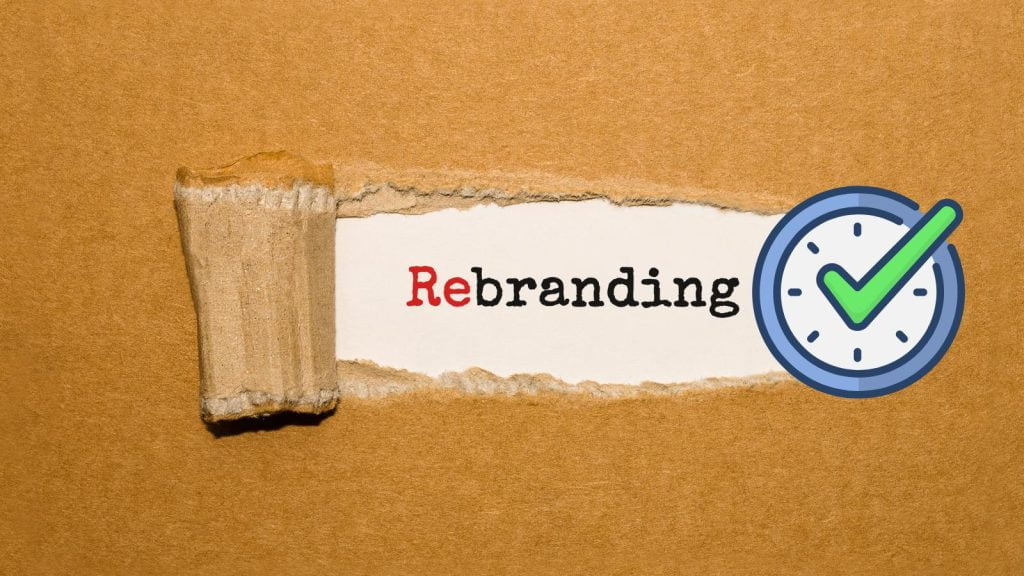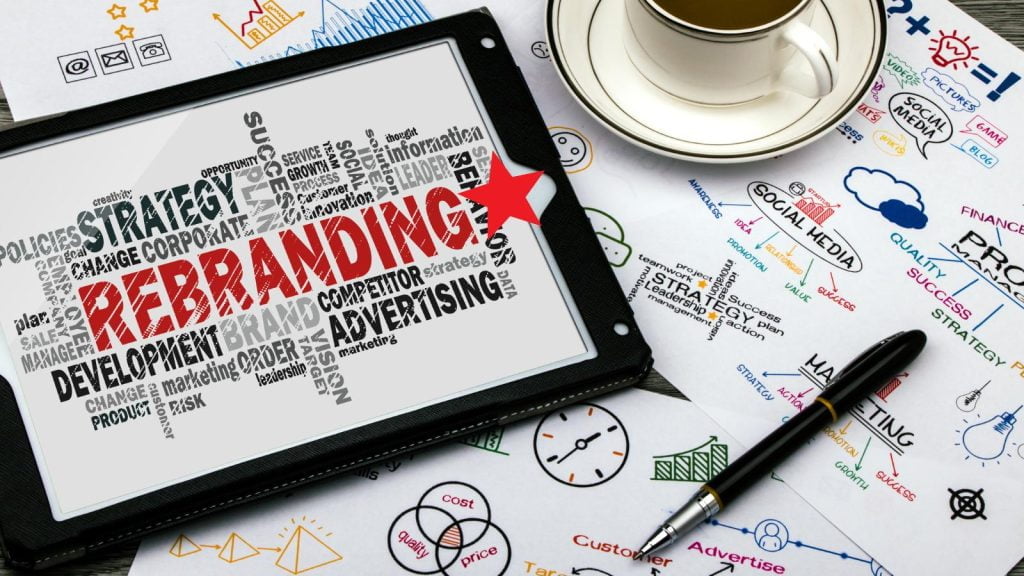Defining your brand as a business is important. But changing and rebranding your business can be just as valuable. In fact, almost 3 in 4 businesses in the S7P 100 have rebranded in their first 7 years of existence.
Rebranding can be a powerful tool for revitalization and growth. Whether it’s to reflect evolving values, reach a new audience, or simply refresh the brand’s image, rebranding holds immense potential.
However, navigating this transition requires careful planning and effective communication to ensure that your customers remain engaged and supportive throughout the process.
Table of Contents
Why Rebrand?
To rebrand your business isn’t merely about changing logos and colors; it’s a strategic move with several benefits.
There are several signs that can help determine when the time for rebranding is right.
Most businesses consider their competition. This is especially relevant for businesses that have been around for a long time and have lost touch with the most recent competition.
Firstly, rebranding allows businesses to stay relevant in a constantly changing market. By adapting to new trends and consumer preferences, rebranding enables companies to maintain their competitive edge.
Additionally, it can help in expanding into new markets or appealing to a broader demographic, thereby increasing customer reach and engagement.
When Is It Time For Rebranding Your Business
It’s time to rebrand when your current brand identity no longer aligns with your offerings or audience.
Rebranding your business makes sense if you’ve expanded into new markets, pivoted or have new products or services, or want to revamp an outdated image.
A brand refresh can also boost declining sales or engagement.
Pay attention to poor brand recognition, low traffic/leads, and inconsistent messaging—these are all signs that rebranding could revive your business.

Rebranding Your Business: Start With Strategy
Rebranding your business is a big deal—it’s about reshaping your brand’s identity and how it’s perceived. The strategy starts with understanding why you need a rebrand in the first place.
Is your current branding outdated or misaligned with your target audience? Once you’ve nailed down the rationale, you’ll want to research your competition and analyze market trends.
This’ll help you craft a brand positioning that stands out. From there, it’s all about developing a fresh visual identity, messaging, and marketing plan that consistently communicates your fresh brand across all customer touchpoints.
Don’t forget to get buy-in from key stakeholders and top clients to have a rollout plan to unveil the rebrand with impact.
Rebranding Your Business Online: Your Website
Your website serves as the digital storefront of your business, making it the ideal platform to announce the rebranding your business efforts.
Ensure that the transition is seamless by updating the website with the updated brand elements, including the logo, color scheme, and messaging.
You need to prioritize user experience, ensuring that visitors can easily navigate through the site and understand the changes.
Using Social Media for Rebranding Your Business
Rebranding requires a strategic approach to reshape your business’s identity and messaging. Social media platforms offer powerful tools to execute a successful rebranding campaign.
You can leverage these channels to unveil your updated brand, connect with your audience, and build excitement around the revamped identity.
Start by updating your social media profiles with the updated branding elements, like logos, visuals, and brand messaging. Consistently use the new branding across all platforms to reinforce the new identity.
Engage your followers by sharing behind-the-scenes glimpses of the rebranding process, soliciting feedback, and encouraging user-generated content.
Strategically timed social media campaigns can build anticipation and curiosity around the rebranding launch. Use targeted ads and influencer partnerships to amplify your reach and attract new audiences.
After the launch, continue nurturing relationships with your community by sharing valuable content aligned with your rebranding strategy.
Keeping Customers Informed: Newsletters and Countdowns
Effective communication is key to keeping customers engaged during a rebranding process. Utilize newsletters to provide updates on the rebranding progress.
You can share insights into the decision-making behind the changes, and generate excitement for the upcoming transformation in the newsletters.
It can be fun to incorporate a countdown timer on your website to build anticipation and remind customers of the impending launch.
Brochures for Networking and Trade Events For Rebranding Your Business
Offline marketing materials remain valuable tools for reaching potential customers and partners. Now’s the time to prepare updated brochures and booklets that reflect the recently updated brand identity, messaging, and offerings.
As you’ll be giving these to both new and existing customers, you want to invest in quality products that get your points across, such as printed saddle stitch booklets about your new brand.
These materials serve as tangible reminders of your brand’s evolution and can leave a lasting impression on attendees at networking events and trade shows.
Addressing Questions and Concerns About Rebranding Your Business
Customers may have questions or concerns about the rebranding process, and it’s essential to address them openly and transparently.
You can use this as the background for a comprehensive content strategy, including blog posts and videos, to explain the reasons behind the rebranding.
Also share about the significance of the new logo and color palette, and how it aligns with the company’s vision and values.
Unsuccessful Rebranding Examples
Twitter’s rebranding to “X” faced backlash. Critics called it confusing and argued the new identity lacked clarity. Musk claimed “X” represented the pursuit of an “everything app,” but many saw it as an ill-conceived, ego-driven move.
Unsuccessful rebrandings often stem from unclear strategies or forced changes that fail to resonate with audiences.
Today most people still refer to Twitter as Twitter and not X. It may take more than a year for it to catch one with users.
Poor rebranding examples often stem from companies failing to understand their core identity and audience. Tropicana’s 2009 package redesign caused sales to plummet as customers struggled to recognize the iconic brand.
Similarly, Gap’s short-lived logo change in 2010 faced intense backlash, forcing them to revert to the original.
Radio Shack’s 2009 rebrand to “The Shack” did little to shed its outdated image. These missteps highlight the risks of straying too far from an established brand without conducting thorough research and testing.
You can learn from these examples as you are thinking about rebranding your business.
Conclusion: Rebranding Your Business Strategically
In conclusion, rebranding is a strategic endeavor that holds immense potential for businesses seeking growth and adaptation. But there’s more to it than creating a newer brand image.
You can guide your customers through the rebranding journey and ensure that they remain engaged and supportive throughout the process.
This is an opportunity to refresh your brand and forge stronger connections with your audience in the process.
Have you been rebranding your business recently? I’d love to hear about it in the comments below.
Rebranding Your Business: Guiding Your Customers Through It Share on X



